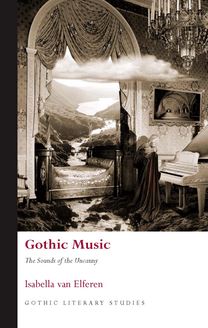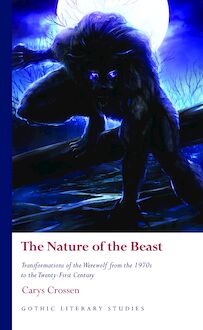-
 Univers
Univers
-
 Ebooks
Ebooks
-
 Livres audio
Livres audio
-
 Presse
Presse
-
 Podcasts
Podcasts
-
 BD
BD
-
 Documents
Documents
-
- Cours
- Révisions
- Ressources pédagogiques
- Sciences de l’éducation
- Manuels scolaires
- Langues
- Travaux de classe
- Annales de BEP
- Etudes supérieures
- Maternelle et primaire
- Fiches de lecture
- Orientation scolaire
- Méthodologie
- Corrigés de devoir
- Annales d’examens et concours
- Annales du bac
- Annales du brevet
- Rapports de stage
La lecture à portée de main
Vous pourrez modifier la taille du texte de cet ouvrage
Découvre YouScribe en t'inscrivant gratuitement
Je m'inscrisDécouvre YouScribe en t'inscrivant gratuitement
Je m'inscrisEn savoir plus
Vous pourrez modifier la taille du texte de cet ouvrage
En savoir plus

Description
Sujets
Informations
| Publié par | University of Wales Press |
| Date de parution | 15 septembre 2009 |
| Nombre de lectures | 0 |
| EAN13 | 9781783163717 |
| Langue | English |
| Poids de l'ouvrage | 5 Mo |
Informations légales : prix de location à la page 0,0650€. Cette information est donnée uniquement à titre indicatif conformément à la législation en vigueur.
Extrait
SHAKESPEAREAN GOTHIC
S ERIES P REFACE
Gothic Literary Studies is dedicated to publishing groundbreaking scholarship on Gothic in literature and film. The Gothic, which has been subjected to a variety of critical and theoretical approaches, is a form which plays an important role in our understanding of literary, intellectual and cultural histories. The series seeks to promote challenging and innovative approaches to Gothic which question any aspect of the Gothic tradition or perceived critical orthodoxy.
Volumes in the series explore how issues such as gender, religion, nation and sexuality have shaped our view of the Gothic tradition. Both academically rigorous and informed by the latest developments in critical theory, the series provides an important focus for scholastic developments in Gothic studies, literary studies, cultural studies and critical theory. The series will be of interest to students of all levels and to scholars and teachers of the Gothic and literary and cultural histories.
S ERIES E DITORS
Andrew Smith, University of Glamorgan
Benjamin F. Fisher, University of Mississippi
E DITORIAL B OARD
Kent Ljungquist, Worcester Polytechnic Institute Massachusetts
Richard Fusco, St Joseph s University, Philadelphia
David Punter, University of Bristol
Chris Baldick, University of London
Angela Wright, University of Sheffield
Jerrold E. Hogle, University of Arizona
Shakespearean Gothic
Edited by
Christy Desmet and Anne Williams
The Contributors, 2009
All rights reserved. No part of this book may be reproduced in any material form (including photocopying or storing it in any medium by electronic means and whether or not transiently or incidentally to some other use of this publication) without the written permission of the copyright owner except in accordance with the provisions of the Copyright, Designs and Patents Act 1988 or under the terms of a licence issued by the Copyright Licensing Agency Ltd, Saffron House, 6-10 Kirby Street, London, EC1N 8TS. Applications for the copyright owner s written permission to reproduce any part of this publication should be addressed to the University of Wales Press, 10 Columbus Walk, Brigantine Place, Cardiff, CF10 4UP.
British Library Cataloguing-in-Publication Data
A catalogue record for this book is available from the British Library.
ISBN 978-0-7083-2093-8 (hardback) 978-0-7083-2092-1 (paperback)
eISBN: 978-1-78316-371-7
The rights of the Contributors to be identified as authors of their contributions has been asserted by them in accordance with sections 77, 78 and 79 of the Copyright, Designs and Patents Act 1988.
Miss Ellen Terry as Juliet
For our Mothers:
in memory of Rosemary Desmet (1925-2007) and in gratitude to Gary Palmer Williams
C ONTENTS
Acknowledgements
List of Illustrations
List of Contributors
Introduction
PART I: GOTHIC APPROPRIATIONS OF SHAKESPEARE
1 Reading Walpole Reading Shakespeare
Anne Williams
2 Ann Radcliffe, The Shakespeare of Romance Writers
Rictor Norton
3 The Curse of Shakespeare
Jeffrey Kahan
PART II: REWRITING SHAKESPEARE S PLAYS AND CHARACTERS
4 Shakespearean Shadows Parodic Haunting of Thomas Love Peacock s Nightmare Abbey and Jane Austen s
Northanger Abbey
Marjean D. Purinton and Marliss C. Desens
5 Fatherly and Daughterly Pursuits: Mary Shelley s Matilda and Shakespeare s King Lear
Carolyn A.Weber
6 Into the Madman s Dream: the Gothic Abduction of Romeo and Juliet
Yael Shapira
7 Gothic Cordelias: the Afterlife of King Lear and the Construction of Femininity
Diane Long Hoeveler
PART III: SHAKESPEARE AS GOTHIC WRITER
8 We are not safe : History, Fear and the Gothic in Richard III
Jessica Walker
9 Remembering Ophelia: Ellen Terry and the Shakespearizing of Dracula
Christy Desmet
10 Rites of Memory : the Heart of Kenneth Branagh s Hamlet
Susan Allen Ford
Afterword: Shakespearean Gothic
Frederick Burwick
Bibliography
A CKNOWLEDGEMENTS
We would like to thank the contributors to Shakespearean Gothic for their intelligence, hard work and patience. We would also like to thank Andy Smith, Ennis Akpinar of the University of Wales Press and the participants in the session on Shakespearean Gothic at the 2005 International Gothic Association meeting in Montreal. David Schiller and John Boyd deserve special mention for their support during this long process. Ily, the Jack Russell, and Oliver, Domingo and Percy (the Bad Brown Tabbies) were always sympathetic listeners whenever editorial problems needed to be addressed. We are dedicating this volume to our mothers, who started us on our separate literary journeys toward the Gothic.
The photographs of Ellen Terry as Ophelia, Lady Macbeth and Mamillius are reproduced by kind permission of the National Portrait Gallery, London. The photograph of the set from the 1984 Royal Shakespeare Company production of Hamlet is reproduced by permission of Donald Cooper. The image of Hamlet and the Ghost from the 1992 Royal Shakespeare Company production of Hamlet is reproduced with the permission of the Shakespeare Centre Library. Finally, we would like to thank the Goettingen University Library and the German Shakespeare Society for permission to reproduce the images from the Boydell Shakespeare Gallery that accompany Frederick Burwick s essay.
I LLUSTRATIONS
1 Ellen Terry as Ophelia
2 Ellen Terry as Lady Macbeth
3 Charles Kean as Leontes and Ellen Terry as Mamillius
4 Set from the 1984 Ron Daniels Royal Shakespeare Company production of Hamlet
5 Hamlet and the Ghost, from the 1992 Adrian Noble Royal Shakespeare Company production of Hamlet
6 Henry Fuseli, Hamlet, Horatio, Marcellus and the Ghost
7 Henry Fuseli, A Heath - Macbeth, Banquo and Three Witches
8 Sir Joshua Reynolds, A Dark Cave. Three Witches, Macbeth, Hecate
9 Sir Joshua Reynolds, The Death of Cardinal Beaufort
10 John Opie, Mother Jourdain, Hume, Southwell, Bolingbroke, Eleanor
C ONTRIBUTORS
Frederick Burwick, UCLA
Christy Desmet, University of Georgia
Marliss C. Desens, Texas Tech University
Susan Allen Ford, Delta State University
Diane Long Hoeveler, Marquette University Jeffrey Kahan, University of LaVerne
Rictor Norton, Independent Scholar
Marjean D. Purinton, Texas Tech University
Yael Shapira, Hebrew University of Jerusalem
Jessica Walker, University of Georgia
Carolyn A. Weber, Seattle University
Anne Williams, University of Georgia
Introduction
ANNE WILLIAMS AND CHRISTY DESMET
Shakespeare and the Gothic were born together in the eighteenth century. By Shakespeare we mean the canonical figure in place by the 1790s, England s national poet and candidate for the greatest writer of the Western tradition, the Shakespeare who, as Harold Bloom would later claim, invented the human . But the concept of Gothic story that sprang fully armed from Horace Walpole s dreaming brow in 1764 has only recently begun to be regarded as a significant phenomenon, though it has also inspired some grandiose claims.
The essays in this volume attest to the importance and complexity of this simultaneous parturition. Yet the phrase Shakespearean Gothic sounds paradoxical or oxymoronic. What could Shakespeare have to do with the Gothic, that repository of cheap thrills? What could be Shakespearean about the mad monks and fainting heroines of early Gothics, the vampires and werewolves of its later incarnations? A casual survey of early Gothic writing (1764-1820) reveals a plenitude of conscious and unconscious Shakespearean elements. If the two were born together, however, their native relationship was quickly suppressed. Shakespeare continued his upward path towards Parnassus throughout the nineteenth century, while the Gothic went underground, subsisting in the realm of shilling shockers and penny dreadfuls, or in pulpy serials such as Varney the Vampire . Thus, when professional literary criticism was institutionalized around the beginning of the twentieth century, scholars assumed that Shakespeare had no relation to the Gothic whatsoever.
To uncover the secret relation between this unlikely pair provides something of a Gothic story in itself, a tale of two longlost relatives reunited at last. But what, exactly, is the nature of their kinship? Though separated virtually at birth, these literary siblings do not re-enact the Shakespearean and Gothic plot convention of separated twins. In attempting to clarify their subtle and complex relationship, one might be reminded of Carl Jung s theory that every personality consists of an ego and its shadow , the conscious and unconscious dimensions of a single self. The shadow exists only insofar as the ego, the subject s public face, casts its inevitable shadow. As Shakespeare materialized as the father of English literature in the eighteenth-century imagination, his figure cast a growing shadow, which from Horace Walpole onwards came to be called Gothic. Beginning with Walpole, enthusiasts of the barbarous and the medieval argued that Shakespeare s plays justified their sensational material, monstrosities of all kinds. Thus, a complete portrait of Shakespeare must include his Gothic shadow . And it follows, that in order to read the Gothic clearly, we should contemplate its Shakespearean origins.
Ironically, the construction of Father Shakespeare, his canonization, was inspired by the English desire to defend him against the strictures of French neoclassical critics. Voltaire and many others complained that Shakespearean drama was barbarous, untutored, violating the rules at every turn. Shakespeare carelessly mixed prose and verse, tragedy and comedy, natural and supernatural. He paid no attention to the notions of decorum that banished murders from the stage and demanded that Cordelia s cruel death be rewritten as something more edifying. Certainly, English critics were enjoined to first follow Nature , but Pope and others believed it to be orderly and rational. Yet Shakespeare the barbarian dramat
-
 Univers
Univers
-
 Ebooks
Ebooks
-
 Livres audio
Livres audio
-
 Presse
Presse
-
 Podcasts
Podcasts
-
 BD
BD
-
 Documents
Documents
-
Jeunesse
-
Littérature
-
Ressources professionnelles
-
Santé et bien-être
-
Savoirs
-
Education
-
Loisirs et hobbies
-
Art, musique et cinéma
-
Actualité et débat de société
-
Jeunesse
-
Littérature
-
Ressources professionnelles
-
Santé et bien-être
-
Savoirs
-
Education
-
Loisirs et hobbies
-
Art, musique et cinéma
-
Actualité et débat de société
-
Actualités
-
Lifestyle
-
Presse jeunesse
-
Presse professionnelle
-
Pratique
-
Presse sportive
-
Presse internationale
-
Culture & Médias
-
Action et Aventures
-
Science-fiction et Fantasy
-
Société
-
Jeunesse
-
Littérature
-
Ressources professionnelles
-
Santé et bien-être
-
Savoirs
-
Education
-
Loisirs et hobbies
-
Art, musique et cinéma
-
Actualité et débat de société
- Cours
- Révisions
- Ressources pédagogiques
- Sciences de l’éducation
- Manuels scolaires
- Langues
- Travaux de classe
- Annales de BEP
- Etudes supérieures
- Maternelle et primaire
- Fiches de lecture
- Orientation scolaire
- Méthodologie
- Corrigés de devoir
- Annales d’examens et concours
- Annales du bac
- Annales du brevet
- Rapports de stage




















